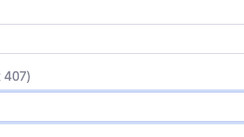Are you saving for retirement? Are you looking for ways to potentially maximize your savings and make the most out of every dollar? An Individual Retirement Account (IRA) may be just what you need. IRAs offer advantages over traditional investments, such as tax-deferred growth and additional contribution options.
With careful consideration and sound investment strategies, your IRA can help secure long-term financial success during retirement. In this article, we'll discuss different types of IRAs, how they can benefit your finances, and which investment strategies make the most sense for reaching potential maximum returns on those funds over time.
Overview of the Different Types of IRAs
Individual Retirement Accounts, or IRAs, are investment accounts that provide individuals with a means of saving for retirement. Several types of IRAs are available, each with its unique set of rules and benefits. The most popular type is the Traditional IRA, in which contributions are made with pre-tax dollars, and taxes are paid upon withdrawal during retirement.
Another option is the Roth IRA, where contributions are made with after-tax dollars, and withdrawals during retirement are tax-free. There are also Simplified Employee Pension (SEP) IRAs for small business owners and their employees and Savings Incentive Match Plan for Employees (SIMPLE) IRAs for businesses with fewer than 100 employees. Each type of IRA has contribution limits, withdrawal restrictions, and tax implications that must be considered when choosing the best option for one's retirement savings plan.
Pros and Cons of Traditional vs. Roth IRAs
When considering which type of IRA is best for your long-term retirement savings, it's essential to think about the pros and cons of both Traditional and Roth IRAs. The primary difference between these two types of accounts is how taxes are handled.
With a Traditional IRA, contributions are made with pre-tax dollars, meaning that taxes are only paid on that income once the funds are withdrawn during retirement. It allows for tax-deferred growth, meaning that taxes can be delayed and potentially minimized over time. However, withdrawals made before age 59 ½ may be subject to taxes and penalties.
On the other hand, contributions to a Roth IRA are made with after-tax dollars. Therefore, withdrawals made during retirement are tax-free, allowing maximum investment returns. While taxes are not deferred until later years, the tax-free earnings could potentially outweigh the benefits of a Traditional IRA in the long run. Gold IRA scams are to be avoided when it comes to any IRA, as they typically involve fraudulent or deceptive practices and can threaten the security of one's retirement savings.
Strategies for Investing in an IRA
Once you've chosen which type of IRA is best for your retirement savings plan, it's essential to consider the best investment strategies for making the most of those funds. The goal should be to create a diversified portfolio with investments tailored to one's risk tolerance and long-term financial goals.
Investment strategies within IRAs typically involve a mix of stocks, bonds, mutual funds, and other investments. An IRA can also invest in real estate or alternative investments, such as gold or precious metals. Ultimately, choosing an investment mix appropriate for the individual's current financial situation and retirement goals is essential.
For those looking to potentially maximize returns on their IRA funds, actively managed investments may be the best option. These types of investments involve researching and selecting individual stocks or mutual funds that have the potential to outperform the market over time. However, active management also requires much research and knowledge about investing strategies to succeed.
Tips for Knowing When to Rebalance Your Investment Portfolio
In addition to choosing the right mix of investments, it is also important to regularly rebalance one's portfolio. Rebalancing helps ensure a portfolio remains diversified and aligned with an individual's financial goals. It typically involves periodically selling off some investments and buying others to maintain the desired ratio of stocks vs. bonds or other asset allocations.
It is also essential to consider other factors, such as market conditions and changes in an individual's financial situation, when deciding whether or not to rebalance a portfolio. For those who need help determining the right time for rebalancing, several online resources can help guide the best strategies for managing IRA investments.
Benefits of Diversifying Your Retirement Portfolio
A diversified portfolio is one of the best ways to protect your retirement savings and potentially maximize returns over time. A diversified portfolio should contain a mix of investments appropriate for an individual's risk tolerance and financial goals and one or more alternative investments, such as gold or real estate.
Investing in various assets can reduce risk while also taking advantage of the potential for earning higher returns in specific markets. Additionally, diversifying your retirement portfolio can help protect against inflation and market fluctuations that may occur over time.
Common Mistakes to Avoid with IRA Investing
When investing in an IRA, it is essential to avoid making some of the common mistakes that can lead to significant losses. For example, failing to rebalance your portfolio periodically or not diversifying your investments could potentially result in losses if specific markets become volatile or underperform.
Another mistake to avoid is investing too aggressively. Risky investments have the potential to produce higher returns, but they also come with a greater risk of loss. It is essential to consider one's individual risk tolerance and financial goals when choosing investments and regularly evaluate market conditions.





